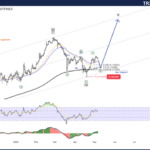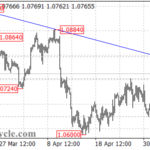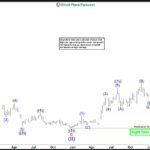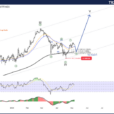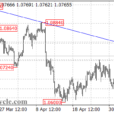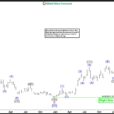
 Image Source: PexelsMARKETSOn Tuesday, U.S. stocks faced challenges as market participants grappled with reigniting the previous rally. Despite modest gains earlier in the session, major indexes such as the Dow and S&P 500 ended the day with their third consecutive decline. Investors remained cautious as they awaited economic data in a holiday-shortened week, seeking clues about the Federal Reserve’s future policy direction.Over the past five months, momentum driven by artificial intelligence (AI) and mega-cap stocks has propelled equities higher. However, investors seem to be pausing for breath over the last three days, following a record-setting run in the market last week.The narrative has become exhaustingly familiar: the “median” Fed official remains inclined to cut rates three times in 2024. While some investors find this stance incongruous with inflation realities, others anticipate that delaying hikes could pose more vexing issues for the Fed down the road.We find ourselves in a tug-of-war between inflation realities and weaker growth expectations, where an excess of either is also undesirable. Investors are seeking a “Goldilocks” scenario, aiming for a balance that is not too hot (reflation) or too cold (recession).Returning to the upcoming PCE release, a 0.3% print on the core gauge would result in a year-over-year pace stalling at 2.8%. It’s worth emphasizing that the month-to-month readings need to cool down. This cooling is crucial because if they don’t, disinflation against the 12-month readings, which the Fed uses to gauge progress, may halt and potentially reverse.Indeed, the fact that 2.8% is only 0.2% above the year-end median in the new Summary of Economic Projections (SEP) isn’t particularly comforting. It indicates that the Fed doesn’t anticipate significant progress in disinflation for the rest of 2024, despite their intention to cut rates three times during this period. Hence, It’s understandable why investors are feeling anxious about the upcoming data releases, as there is not much margin to miss here.With market valuations at lofty levels, there’s little room for corporate earnings performance to falter or for the Federal Reserve to deviate from its anticipated course of three rate cuts. Any divergence from these expectations could potentially lead to market turbulence.Throughout 2023, the US economy consistently exceeded expectations, primarily propelled by robust consumer and government spending growth.The March edition of the Conference Board’s survey revealed that American consumers are generally content with the current state of the US economy. However, their confidence regarding the future appears less assured. The headline gauge dipped slightly to 104.7, a marginal decrease from the downwardly revised 104.8 recorded in February.It’s crucial to consider the context of the recent Conference Board release. The previous report, which highlighted a robust increase in January, was subsequently revised downward significantly, revealing a more modest gain. Therefore, March’s release, indicating a second consecutive monthly decline, also included a notable downward revision to the headline figure for the prior month.So, with American consumers facing uncertainty amid macroeconomic and political ambiguity, one of the primary pillars supporting the economy and markets appears less stable than in previous months. Ongoing political elections and uncertainty surrounding interest rates contribute to this sense of instability.ASIA MARKETSThe convergence of economic and political interests is on the horizon in Beijing as Chinese President Xi Jinping prepares to engage with U.S. business leaders. This meeting, which follows up on his November dinner with U.S. investors in San Francisco, is expected to be significant for fostering dialogue and collaboration between the two countries.Xi’s personal involvement could indicate his dedication to keeping China open for business and enhancing Sino-U.S. relations, or at the very least, preventing further deterioration in ties between the two superpowers.The Chinese economy, markets, and investors are in need of positive developments. While Chinese stocks are poised to record their first quarterly gain in four quarters, this is largely attributed to intervention efforts that sparked a significant rebound from five-year lows in February. However, the momentum has since faded, and Chinese stocks are only marginally up for the month of March. This lacklustre performance has also impacted broader Asian stocks as investors seek safer havens in the U.S. markets.THE PCE DATA BUILD-UPEconomists are anticipating a 0.3% month-on-month increase in the core Personal Consumption Expenditures (PCE) reading scheduled for release on March 29. This forecast is already considered on the warmer side. Any outcome exceeding this consensus would be met with wrath, particularly considering the overshoot observed in the Producer Price Index (PPI)Those monitoring the release on Good Friday will pay close attention to the “supercore” measures, seeking additional evidence regarding the persistence of “sticky” service prices.In a non-holiday environment, we would typically emphasize the release of February’s core PCE numbers. However, a couple of factors suggest that the data may not be as influential as it has been historically. Firstly, it is released when the bond market is closed, meaning the first opportunity to trade it will be the following Monday, giving investors ample time to ponder its significance. Secondly, the combination of CPI and PPI data has provided forecasters (and the Fed) with confidence in the consensus forecast of +0.3%. Additionally, Powell has already indicated that inflation’s trajectory in January and February aligns with the expectation of 75 basis points of rate cuts.More By This Author:Waiting For The All Clear On PCE And Earnings Season?
Image Source: PexelsMARKETSOn Tuesday, U.S. stocks faced challenges as market participants grappled with reigniting the previous rally. Despite modest gains earlier in the session, major indexes such as the Dow and S&P 500 ended the day with their third consecutive decline. Investors remained cautious as they awaited economic data in a holiday-shortened week, seeking clues about the Federal Reserve’s future policy direction.Over the past five months, momentum driven by artificial intelligence (AI) and mega-cap stocks has propelled equities higher. However, investors seem to be pausing for breath over the last three days, following a record-setting run in the market last week.The narrative has become exhaustingly familiar: the “median” Fed official remains inclined to cut rates three times in 2024. While some investors find this stance incongruous with inflation realities, others anticipate that delaying hikes could pose more vexing issues for the Fed down the road.We find ourselves in a tug-of-war between inflation realities and weaker growth expectations, where an excess of either is also undesirable. Investors are seeking a “Goldilocks” scenario, aiming for a balance that is not too hot (reflation) or too cold (recession).Returning to the upcoming PCE release, a 0.3% print on the core gauge would result in a year-over-year pace stalling at 2.8%. It’s worth emphasizing that the month-to-month readings need to cool down. This cooling is crucial because if they don’t, disinflation against the 12-month readings, which the Fed uses to gauge progress, may halt and potentially reverse.Indeed, the fact that 2.8% is only 0.2% above the year-end median in the new Summary of Economic Projections (SEP) isn’t particularly comforting. It indicates that the Fed doesn’t anticipate significant progress in disinflation for the rest of 2024, despite their intention to cut rates three times during this period. Hence, It’s understandable why investors are feeling anxious about the upcoming data releases, as there is not much margin to miss here.With market valuations at lofty levels, there’s little room for corporate earnings performance to falter or for the Federal Reserve to deviate from its anticipated course of three rate cuts. Any divergence from these expectations could potentially lead to market turbulence.Throughout 2023, the US economy consistently exceeded expectations, primarily propelled by robust consumer and government spending growth.The March edition of the Conference Board’s survey revealed that American consumers are generally content with the current state of the US economy. However, their confidence regarding the future appears less assured. The headline gauge dipped slightly to 104.7, a marginal decrease from the downwardly revised 104.8 recorded in February.It’s crucial to consider the context of the recent Conference Board release. The previous report, which highlighted a robust increase in January, was subsequently revised downward significantly, revealing a more modest gain. Therefore, March’s release, indicating a second consecutive monthly decline, also included a notable downward revision to the headline figure for the prior month.So, with American consumers facing uncertainty amid macroeconomic and political ambiguity, one of the primary pillars supporting the economy and markets appears less stable than in previous months. Ongoing political elections and uncertainty surrounding interest rates contribute to this sense of instability.ASIA MARKETSThe convergence of economic and political interests is on the horizon in Beijing as Chinese President Xi Jinping prepares to engage with U.S. business leaders. This meeting, which follows up on his November dinner with U.S. investors in San Francisco, is expected to be significant for fostering dialogue and collaboration between the two countries.Xi’s personal involvement could indicate his dedication to keeping China open for business and enhancing Sino-U.S. relations, or at the very least, preventing further deterioration in ties between the two superpowers.The Chinese economy, markets, and investors are in need of positive developments. While Chinese stocks are poised to record their first quarterly gain in four quarters, this is largely attributed to intervention efforts that sparked a significant rebound from five-year lows in February. However, the momentum has since faded, and Chinese stocks are only marginally up for the month of March. This lacklustre performance has also impacted broader Asian stocks as investors seek safer havens in the U.S. markets.THE PCE DATA BUILD-UPEconomists are anticipating a 0.3% month-on-month increase in the core Personal Consumption Expenditures (PCE) reading scheduled for release on March 29. This forecast is already considered on the warmer side. Any outcome exceeding this consensus would be met with wrath, particularly considering the overshoot observed in the Producer Price Index (PPI)Those monitoring the release on Good Friday will pay close attention to the “supercore” measures, seeking additional evidence regarding the persistence of “sticky” service prices.In a non-holiday environment, we would typically emphasize the release of February’s core PCE numbers. However, a couple of factors suggest that the data may not be as influential as it has been historically. Firstly, it is released when the bond market is closed, meaning the first opportunity to trade it will be the following Monday, giving investors ample time to ponder its significance. Secondly, the combination of CPI and PPI data has provided forecasters (and the Fed) with confidence in the consensus forecast of +0.3%. Additionally, Powell has already indicated that inflation’s trajectory in January and February aligns with the expectation of 75 basis points of rate cuts.More By This Author:Waiting For The All Clear On PCE And Earnings Season?
PCE Week: But The Narrative Feels All Too Familiar
Rate Cuts: Is The Writing On The Wall?



